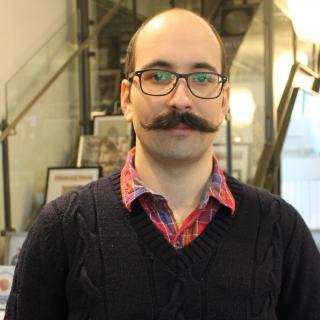Conference: Jun 26-28, 2017
Workshops: Jun 29-30, 2017
Presentation: Handling Streaming Data in Spotify Using the Cloud
Location:
- Salon E
Duration
Day of week:
- Monday
Level:
- Intermediate
Persona:
- Architect
- Developer
- Developer, JVM
Key Takeaways
- Hear how the Spotify’s data delivery pipelines delivers events for a 100 million monthly active users to a central location for all the other developers in the company to use.
- Hear practical lessons from Spotify around large scale, global deployments of Kafka.
- Learn about multi-data center implementation for streaming data, including how they handle failure, replication, and reliability.
Abstract
Spotify’s data is increasing at a rate of 60 billion events per day. The current event delivery system, which is based on Kafka 0.7, is slowly but certainly reaching its limitations. To be able to seamlessly scale the event delivery system with Spotify’s growth, we decided to base the new event delivery system on Google Cloud Pubsub and Google Cloud Dataflow.
Spotify’s event delivery system is one of the foundational pieces of Spotify’s data infrastructure. It has a key requirement to deliver complete data with a predictable latency and make it available to Spotify developers via well-defined interface. Delivered data is than used to produce Discover Weekly, Spotify Party, Year in music and many other Spotify features.
This talk is going to cover the evolution of Spotify’s event delivery system focusing on the lessons learned from operating it and reasons behind the decision of moving it into the cloud.
This talk will also going to cover Scio, which we developed to make the Dataflow SDK easier to use. Scio is a high level Scala API for the Dataflow SDK which brings Dataflow closer to popular data processing frameworks.
Interview
Similar Talks



Tracks
Monday, 13 June
-
Architectures You've Always Wondered About
Case studies from: Google, Linkedin, Alibaba, Twitter, and more...
-
Stream Processing @ Scale
Technologies and techniques to handle ever increasing data streams
-
Culture As Differentiator
Stories of companies and team for whom engineering culture is a differentiator - in delivering faster, in attracting better talent, and in making their businesses more successful.
-
Practical DevOps for Cloud Architectures
Real-world lessons and practices that enable the devops nirvana of operating what you build
-
Incredible Power of an Open-Sourced .NET
.NET is more than you may think. From Rx to C# 7 designed in the open, learn more about the power of open source .NET
-
Sponsored Solutions Track 1
Tuesday, 14 June
-
Better than Resilient: Antifragile
Failure is a constant in production systems, learn how to wield it to your advantage to build more robust systems.
-
Innovations in Java and the Java Ecosystem
Cutting Edge Java Innovations for the Real World
-
Modern CS in the Real World
Real-world Industry adoption of modern CS ideas
-
Containers: From Dev to Prod
Beyond the buzz and into the how and why of running containers in production
-
Security War Stories
Expert-level security track led by well known and respected leaders in the field
-
Sponsored Solutions Track 2
Wednesday, 15 June
-
Microservices and Monoliths
Practical lessons on services. Asks the question when and when to NOT go with Microservices?
-
Modern API Architecture - Tools, Methods, Tactics
API-based application development, and the tooling and techniques to support effectively working with APIs in the small or at scale. Using internal and external APIs
-
Commoditized Machine Learning
Barriers to entry for applied ML are lower than ever before, jumpstart your journey
-
Full Stack JavaScript
Browser, server, devices - JavaScript is everywhere
-
Optimizing Yourself
Keeping life in balance is always a challenge. Learning lifehacks
-
Sponsored Solutions Track 3










